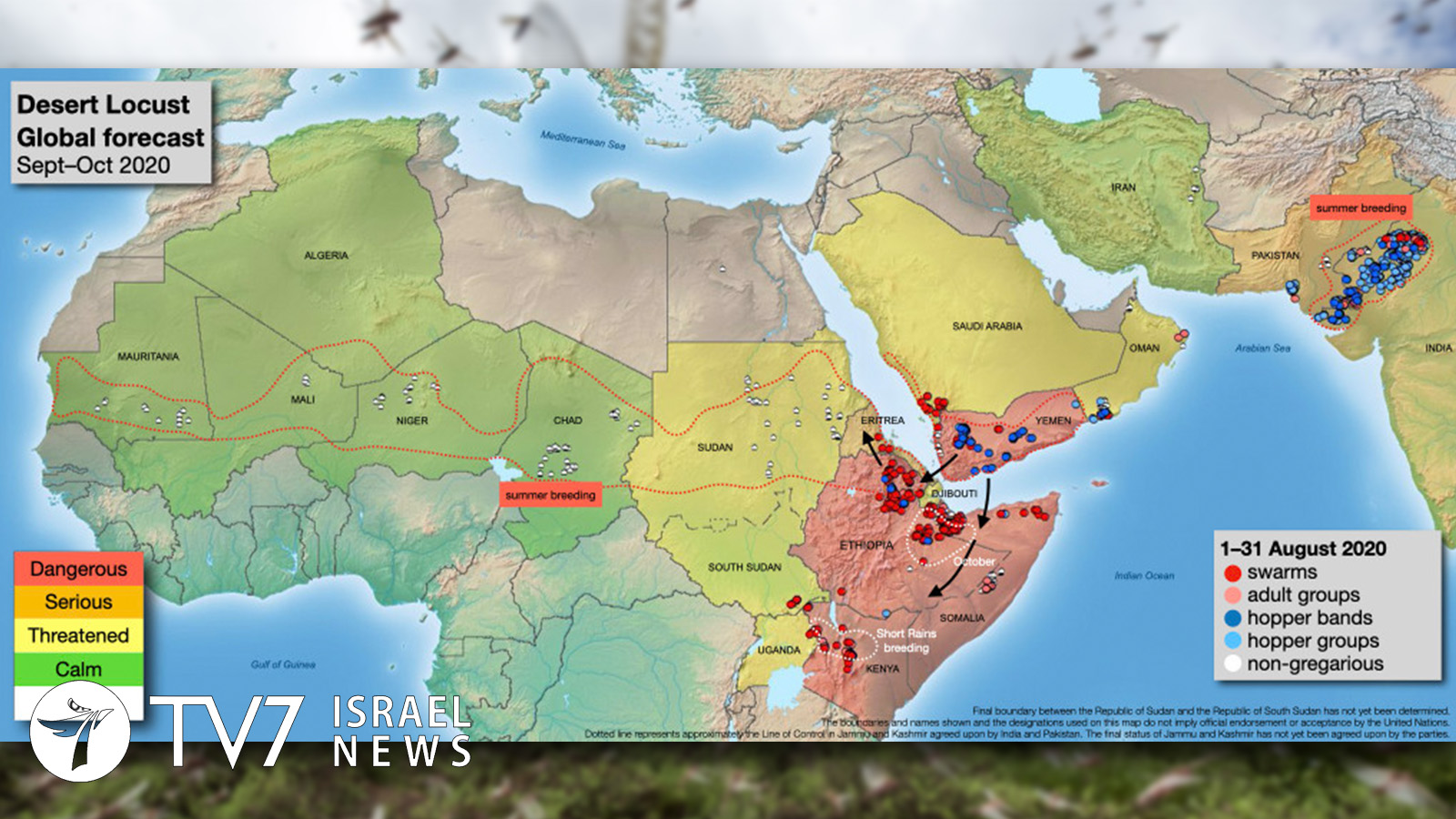The United Nations Food and Agriculture Organization (FAO) is calling for swift action to combat a surge of desert locusts in the southern African states of Botswana, Namibia and Zimbabwe.
The East African country of Zambia is also at increased risk the FAO revealed just days ago, although the swarms in the aforementioned four countries have yet to swell to the size elsewhere on the continent.
Economic fallout caused by last year’s drought and the current coronavirus pandemic may be further “aggravated by the inaccessibility and ecological sensitivity of some of the affected areas,” said the FAO. The UN organization’s coordinator for southern Africa, Patrice Talla stressed that, “Some of the worst-affected areas are very difficult to reach.”
Meanwhile, ground and aerial control operations continue against persisting swarms in the Horn of Africa. The infestation is expected to increase substantially in Ethiopia, Eritrea, Yemen, and possibly to a lesser extent on the Red Sea coast in Sudan and Saudi Arabia where numerous hopper bands could form during September.
Newborn locusts are referred to as hoppers because they are not yet able to fly.
According to the latest update published by the Desert Locust Information Service (DLIS), summer breeding is underway in northern Ethiopia where rising numbers of hopper bands are forming in Afar and eastern Amhara and Tigray.
Any swarms that escape detection and subsequent control in northwest Kenya are expected to remain and mature during September and lay eggs with the onset of the Short Rains.
There is also increasing concern that when winds shift direction in October, swarms that remain immature in eastern Ethiopia and northern Somalia could spread south toward Kenya. The feared-infestation may be further enlarged by several swarms from Yemen, where control operations have recently been activated in the interior against numerous hopper bands and swarms.
Desert locusts are capable of migrating at about 16 kilometers per hour dependent on local conditions.
Several mature swarms have already invaded Eritrea and spread throughout the highlands and the Red Sea coast where good rains fell in August.
Swarms from Yemen invaded southwest Saudi Arabia, some of which reached the Red Sea coast near Jizan. One swarm moved on 31 August from northwest Kenya to adjacent areas of Budi district in Eastern Equatoria, South Sudan.
Adult groups and a swarm formed after local breeding on the coast of southern Oman.
The situation remains calm in the northern Sahel from Mauritania to western Eritrea, where rainfall occurred far further north than usual last month and future breeding estimates are low.
Intensive control operations in southwest Asia have significantly reduced infestations in both India and Pakistan. While extensive hatching and hopper band formation occurred in India and, on a smaller scale, in southeast Pakistan, the second generation of breeding that commences this month is expected to be on a much smaller and more manageable scale.
Pakistan is seeking innovative ways to cope with its worst locust infestation in three decades.
The outbreak began June 2019 after swarms migrated from Iran, in a surge linked by climate experts to changing conditions that facilitated conducive to the spread.
It is also tied to a “climate change-induced international locust crisis” in Yemen and East Africa, says Muhammad Tariq Khan, the Technical Director of the Plant Protection Department at the Pakistani Ministry of Food Security. He told Reuters that first, “two big cyclones in 2018 dumped enough water in a desert area called the Empty Quarter in the Arabian Peninsula for three generations of locusts to grow undetected,” he explained. This was followed by the inability of war-torn Yemen to properly exterminate the pests, which lay their eggs beneath the soil, which “came up like a bomb,” he said. The situation was further worsened, Khan explained, with the creation of moist soil conditions favorable for breeding in the border desert area when July’s monsoon rains arrived 10 days earlier than usual.
The FAO has estimated that financial losses to Pakistan’s agricultural sector by locusts in 2020 could reach $2.2 billion for winter crops like wheat and potatoes and about $2.8 billion for summer crops.
Islamabad is now undertaking a new $15 million project to turn the voracious pests into organic fertilizer for the benefit of local communities. The state-run Pakistan Agricultural Research Council (PARC) had initially launched a trial study in February aimed at using locusts to feed chickens, but changed focus after concern arose that pesticide-spraying operations could be harmful to plants, animals and people.
“Sprayed locusts, if used as feed, are a threat to human health,” PARC Chairman Muhammad Azeem Khan explained to Reuters.
Researchers motivated by efforts to seek chemical-free methods of eliminating the locust population came up the new plan, described by biotechnologist Johar Ali as “environmentally friendly and sustainable.”
The new initiative has been approved by Pakistan’s National Locust Control Center. Communities in the Cholistan, Tharparkar, Nara and Thal desert areas were trained on how to catch locusts, which are sold both dead or alive for 25 rupees per kilo ($1 = 165.83 Pakistani Rupees). The insects are then mixed with bio-waste such as manure and vegetation and transformed into a rich compost capable of providing the “slow and continuous” release of nutrients, which Azeem Khan said could help farmers increase yields by 30% while halving the use of chemical fertilizer.
— By Erin Viner
